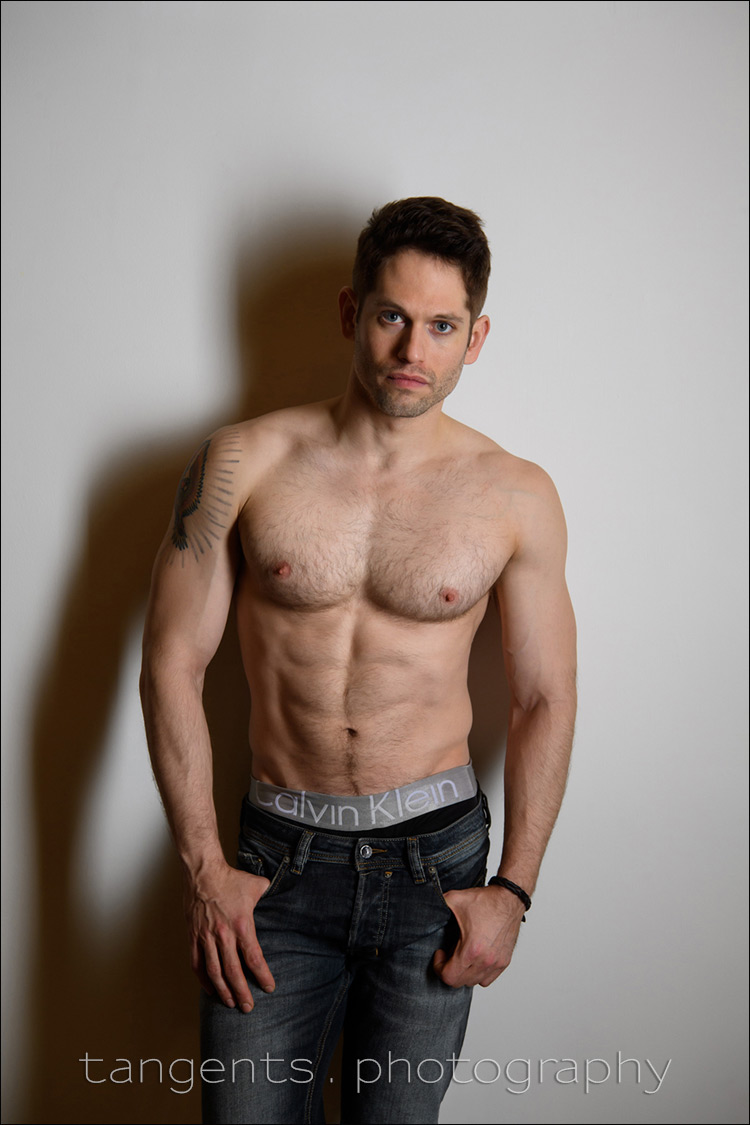


You can just see the key light, a 60” Photek Softlighter configured as a bounce umbrella. Here is the basic setup ( click the image for a larger view). It seemed too that the direction of light could come from an off-axis angle and might look best if coming from nearly directly above. I reasoned that a grid would be helpful to control exactly where the small light would have its effect. Thinking about this prompted me to experiment with supplementing a large soft light source with a small light source to give a slight contrast boost (facial contouring). It produces really nice light quality for a single light source, but not perfect in terms of falloff or facial contouring. I like that it offers a relatively soft light with just enough punch for good shadows to define the contours of the face. Another configuration that gets used is a single Softlighter, configured as a softbox umbrella. I often use a large softbox or umbrella and add a small umbrella or softbox right next to it, Monte Zucker style. As I see things, the larger the light, the closer it resembles ambient room light by providing a gentle falloff at the sides. As described in this post on Quality of Light, a large light source produces soft light (soft shadows) and a small light source produces hard light (sharp shadows). This is one of those, what would happen if, type experiments where I was pondering the idea of accenting the face a little bit by sculpting with light. The grid lets us place the contrast at a specific area with minimal impact on the rest of the lighting. What is really going on here is that a small light source at a low lighting ratio is being used to give a subtle, but important contrast boost to the face. Whenever I’ve bought a softbox that didn’t come with one, I’ve found it to be virtually impossible to find one that fits perfectly after the fact.The title for today's post is a bit misleading, as a grid doesn't really increase contrast, it only increases the directionality of light giving more control over where the light will and will not appear. I find them invaluable, and always recommend getting them with your softbox if you can. They block the light from spilling out the sides and illuminating things you want to remain dark, or plan to light some other way. A grid allows you to direct the light toward the subject without it hitting the lens, and eliminating the chance of flare or hitting the background. You’ll probably also get a little spill on the far right side of the background, too. Without a grid you’ll get that nice rimlight on your subject, but with a large bright light source pointing toward the camera, even if not in shot, there’s a chance of flaring if light is hitting the front lens element. Something similar to the first comparison images in this post. Imagine another softbox behind the subject on the left creating a rim light up the shadow side. One thing not mentioned in the video, but a reason I often use grids is for rim lights. The grid helps to stop light hitting the background while keeping your subject well lit. It’s how you can use softboxes with subjects fairly close to a background. They’re not normally in the shot, but it demonstrates the principle of how grids work, by blocking light from spilling off at odd angles. Now, this isn’t a typical use for softboxes. On the right, with the grid attached, we can’t (mostly) see the front surface of the softbox, which means that light isn’t spilling onto the camera. This means that the front surface of the softbox is also shining light out toward the camera. This image illustrates that with a bare softbox, the camera can see the front surface of the softbox. Rather than the front surface blasting out light in all directions, the grid basically flags off the side angles, allowing it to project more toward the front. You still get that nice soft look one expects from a softbox, but it’s more confined. Essentially, as David illustrates, grids help to control the spill of light coming out of your softbox.


 0 kommentar(er)
0 kommentar(er)
